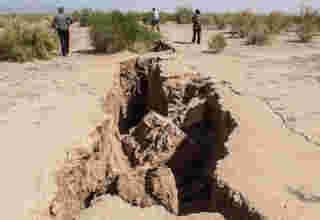
TEHRAN: A senior Iranian seismologist on Wednesday said that close to 40 million people in Iran, nearly half the country’s entire population, live in zones at risk of land subsidence.
Ali Beitollahi, a seismologist with Iran’s Road, Housing and Urban Development Research Center, made the remarks in a meeting on the impacts of land subsidence on cultural heritage and historical sites, according to the official news agency IRNA.
He said the latest studies show that 158,000 square kilometers, almost 10 percent of the country’s entire area, face the challenge of land subsidence.
Beitollahi noted that close to 380 cities in Iran are located in such zones, stressing that the central province of Isfahan faces the highest risk of land subsidence in the country.
Iran’s IRIB news agency on Tuesday cited Esmaeil Salimi from Tehran Disaster Mitigation and Management Organization, as saying that Tehran province annually subsides by 13 cm due to the depletion of underground water reservoirs.
In December last year, Zabihollah Azami Sardoui, spokesperson of the Agriculture, Water and Natural Resources Commission of the Iranian parliament, said excessive water extraction from agricultural wells has caused land subsidence in many Iranian plains, calling on the government to restrict the cultivation of water-intensive crops.
Land subsidence is defined as a gradual or sudden sinking of the earth’s surface owing to the subsurface movement of earth materials.





























